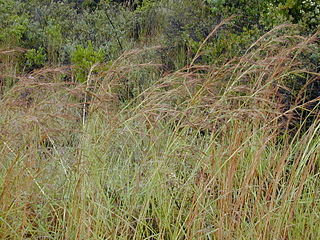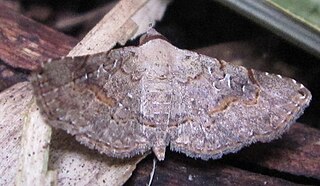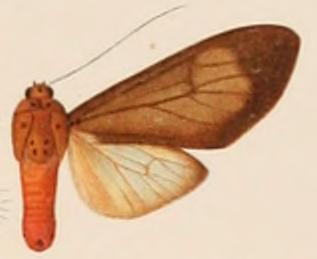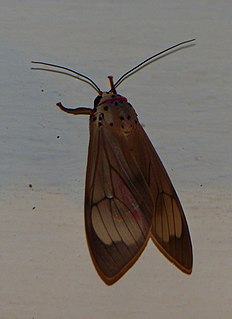The individual member states of the African Union (AU) coordinate foreign policy through this agency, in addition to conducting their own international relations on a state-by-state basis. The AU represents the interests of African peoples at large in intergovernmental organizations (IGO's); for instance, it is a permanent observer at the United Nations' General Assembly.
Listed below are the dates and results for the 1974 FIFA World Cup qualification rounds for the African zone (CAF). For an overview of the qualification rounds, see the article 1974 FIFA World Cup qualification.

Hyparrhenia is a genus of grasses. Many species are known commonly as thatching grass.
Acontiola is a genus of moths of the family Noctuidae. The genus was described by Staudinger in 1900.
Cautatha is a genus of moths of the family Noctuidae. The genus was erected by George Hampson in 1910.

Eublemma is a genus of moths of the family Erebidae described by Jacob Hübner in 1829.

Ozarba is a genus of moths of the family Noctuidae. The genus was erected by Francis Walker in 1865.

Pericyma is a genus of moths in the family Erebidae. The genus was erected by Gottlieb August Wilhelm Herrich-Schäffer in 1851.

Pseudozarba is a genus of moths in the subfamily Eustrotiinae of the family Noctuidae. The genus was described by Warren in 1913.

Rhesala is a genus of moths of the family Erebidae. The genus was erected by Francis Walker in 1858.

Byblia anvatara, the common joker, is a butterfly of the family Nymphalidae, found in Sub-Saharan Africa.

Amerila puella is a species of moth of the subfamily Arctiinae. It is found in Senegal, Sierra Leone, Ivory Coast, Ghana, Nigeria, Zaire, Uganda, Ethiopia, Kenya, Tanzania and Malawi.

Mocis mayeri is a moth of the family Erebidae first described by Jean Baptiste Boisduval in 1833. It has a wide range in Africa, which includes Cameroon, Cape Verde, the Comoros, the Democratic Republic of the Congo, Eritrea, Ghana, Kenya, Réunion, Madagascar, Malawi, Mauritius, Mozambique, Nigeria, Senegal, the Seychelles, Sierra Leone, South Africa, Sudan, Tanzania, the Gambia, Uganda, Zambia and Zimbabwe. It is also found in Saudi Arabia and Yemen.

Amerila vitrea is a species of moth of the subfamily Arctiinae. It was described by Carl Plötz in 1880. It is found in Angola, Benin, Burkina Faso, Cameroon, the Republic of the Congo, The Democratic Republic of the Congo, Eritrea, the Gambia, Ghana, Ivory Coast, Kenya, Liberia, Madagascar, Mozambique, Namibia, Nigeria, Rwanda, Senegal, Sierra Leone, Somalia, South Africa, Sudan, Tanzania, Uganda, Zambia and Zimbabwe.
Arcyophora is a genus of moths of the family Erebidae. The genus was erected by Achille Guenée in 1852.









